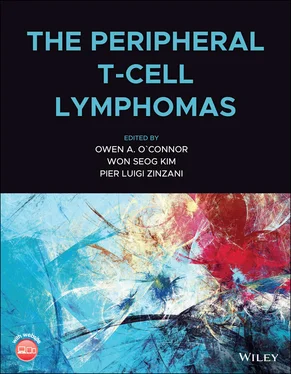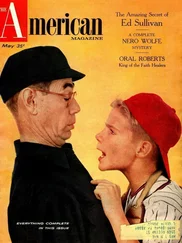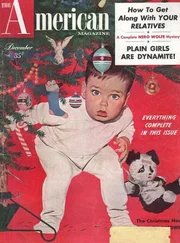127 127 He, A. and Miranda, J.L. (2018). JQ1 reduces Epstein–Barr virus‐associated lymphoproliferative disease in mice without sustained oncogene repression. Leuk Lymphoma 59 (5): 1248–1251.
128 128 Gopalakrishnan, R., Matta, H., Tolani, B. et al. (2016). Immunomodulatory drugs target IKZF1‐IRF4‐MYC axis in primary effusion lymphoma in a cereblon‐dependent manner and display synergistic cytotoxicity with BRD4 inhibitors. Oncogene 35 (14): 1797–1810.
129 129 Dickinson, M., Kamdar, M., Huntly, B. et al. (2018). A phase I study of molibresib (GSK525762), a selective Bromodomain (BRD) and extra terminal protein (BET) inhibitor: results from part 1 of a phase I/II open label single agent study in subjects with Non‐Hodgkin's Lymphoma (NHL). Blood 132: 1682.
130 130 Panfil, A.R., Al‐Saleem, J., Howard, C.M. et al. (2015). PRMT5 is upregulated in HTLV‐1‐mediated T‐cell transformation and selective inhibition alters viral gene expression and infected cell survival. Viruses 8 (1): 7.
131 131 Li, Y., Chitnis, N., Nakagawa, H. et al. (2015). PRMT5 is required for lymphomagenesis triggered by multiple oncogenic drivers. Cancer Discov 5 (3): 288–303.
132 132 Tan, D., Phipps, C., Hwang, W.Y.K. et al. (2015). Panobinostat in combination with bortezomib in patients with relapsed or refractory peripheral T‐cell lymphoma: an open‐label, multicentre phase 2 trial. Lancet Haematol 2 (8): e326–e333.
133 133 Amengual, J.E., Lichtenstein, R., Lue, J. et al. (2018). A phase 1 study of romidepsin and pralatrexate reveals marked activity in relapsed and refractory T‐cell lymphoma. Blood 131 (4): 397–407.
134 134 Strati, P., Nastoupil, L.J., Davis, R.E. et al. (2020). A phase 1 trial of alisertib and romidepsin for relapsed/refractory aggressive B‐cell and T‐cell lymphomas. Haematologica 105 (1): e26–e28.
135 135 Moskowitz, A.J., Koch, R., Mehta‐Shah, N. et al. (2017). In vitro, in vivo, and parallel phase I evidence support the safety and activity of duvelisib, a PI3K‐δ,γ inhibitor, in combination with romidepsin or bortezomib in relapsed/refractory T‐cell lymphoma. Blood 130 (Suppl 1): 819.
136 136 Mehta‐Shah, N., Lunning, M.A., Boruchov, A.M. et al. (2015). A phase I/II trial of the combination of romidepsin and lenalidomide in patients with relapsed/refractory lymphoma and myeloma: activity in T‐cell lymphoma. J Clin Oncol 33 (15 Suppl): 8521.
137 137 Cycon, K.A., Mulvaney, K., Rimsza, L.M. et al. (2013). Histone deacetylase inhibitors activate CIITA and MHC class II antigen expression in diffuse large B‐cell lymphoma. Immunology 140 (2): 259–272.
138 138 Tiper, I.V. and Webb, T.J. (2016). Histone deacetylase inhibitors enhance CD1d‐dependent NKT cell responses to lymphoma. Cancer Immunol Immunother 65 (11): 1411–1421.
139 139 Ghoneim, H.E., Fan, Y., Moustaki, A. et al. (2017). De novo epigenetic programs inhibit PD‐1 blockade‐mediated T cell rejuvenation. Cell 170 (1): 142–157.e19.
140 140 Lai, Q., Wang, H., Li, A. et al. (2018). Decitibine improve the efficiency of anti‐PD‐1 therapy via activating the response to IFN/PD‐L1 signal of lung cancer cells. Oncogene 37 (17): 2302–2312.
4 Animal Models of T‐cell Lymphoma
Keiichiro Hattori1, Raksha Shrestha2, Tatsuhiro Sakamoto1,2, Manabu Kusakabe1,2 and Mamiko Sakata‐Yanagimoto1,2
1Department of Hematology, Faculty of Medicine, University of Tsukuba Hospital, Tsukuba, Japan
2Graduate School of Comprehensive Human Sciences, University of Tsukuba, Tsukuba, Japan
Mouse models of T‐cell lymphomas have been established based on the analysis of mutational profiles or gene/protein expression profiles of human samples.
Patient‐derived xenograft models of T‐cell lymphomas have been also generated as potential preclinical tools for translational research.
Mouse models have helped to unveil the pathogenesis and signaling pathways in T‐cell lymphomas.
Mouse models provide tools to achieve higher rates of successful translation of basic research to clinical trials.
Peripheral T‐cell lymphomas (PTCL) are a heterogeneous group of blood cancers with varying pathological and clinical features. Standard chemotherapy approaches for most PTCL are not yet well established, with the exception of anaplastic lymphoma kinase positive (ALK+) anaplastic large‐cell lymphoma (ALCL). Thus, better understanding of the molecular pathogenesis of these intractable diseases is warranted to develop effective therapies. In that effort, analysis of samples collected from patients with PTCL has been the gold standard for analysis of gene and protein expression, as well gene mutational profiles. However, it remains challenging to discover fundamental mechanisms that could be targeted based on analysis of samples with such heterogeneous backgrounds. Also, both the initiation and dynamic course of these diseases are difficult to pinpoint due to limitations on sample collection by their rarity. Nonetheless, recent analysis of patient samples has identified some mutational profiles and expression signatures for various types of PTCL that can be modeled in mice, which is an essential step in developing novel treatments.
In this chapter we describe several mouse lines established for angioimmunoblastic T‐cell lymphoma (AITL), ALCL, adult T‐cell leukemia/lymphoma (ATLL), cutaneous T‐cell lymphoma (CTCL) and enteropathy‐associated T‐cell lymphoma (EATL) (Summarized in Table 4.1). Most of the mouse lines are established by transgenic or knock‐in strategies commonly used to express oncogenes identified in patient samples. One advantage of transgenic models is that the transgene can be engineered to be expressed tissue‐specifically or responsive to a particular drug. Knock‐in models are superior to transgenic models in that oncogenic genes are expressed at physiological levels. Clustered regularly interspaced short palindromic repeats (CRISPR)‐Cas9, a powerful genome‐editing tool has begun to be incorporated in this research area. Moreover, patient‐derived xenograft (PDX models have been established by inoculating patient samples into immunodeficient mice. Ultimately, a combination of all these approaches will be necessary to understand mechanisms driving initiation and progression of PTCL.
Table 4.1 Mouse models of peripheral T‐cell lymphomas (PTCL)
| Types of PTCL |
Models |
Methods |
Phenotypes of mice |
Others (downstream signaling, etc.) |
Reference |
| AITL |
Roquinsan |
Heterozygous for Roquinsan : a missense (M199R) sanroque mutation in the Roquin gene |
Increase of TFH cells AITL‐like disease around 4 to 15 months |
No ROQUIN gene alterations in human AITL |
Ellyard 4 |
| Tet2 gene trap |
A gene‐trap vector inserted into the Tet2 second intron |
Development of T‐cell lymphomas with TFH‐like phenotype around 67 weeks |
Hypermethylation of silencer region of Bcl6 gene |
Muto 10 |
| G17V RHOA |
G17V RHOA cKI mice crossed with CD4Cre‐ERT2 |
Increase of TFH cells |
|
Cortes 14 |
| G17V RHOA transgenic mice under the Cd4 promoter |
Increase of TFH cells Autoimmunity |
|
Ng 15 |
| G17V RHOA transgenic mice under the CD2 promoter |
No phenotype |
|
Nguyen 16 |
| G17V RHOA ‐ Tet2 null |
Retroviral transduction of G17V RHOA mutant cDNA into Tet2 ‐null T cells |
Increase of TFH cells CD4 +proliferation |
Inactivation of FoxO1 |
Zang 13 |
| G17V RHOA cKI mice crossed with CD4CreERT2 and Tet2 cKO with SRBC immunization |
AITL‐like disease around 25 weeks |
ICOSL‐ICOS signaling Activation of PI3K‐mTOR signaling |
Cortes 14 |
| G17V RHOA transgenic mice crossed with Tet2 cKO x Vav‐Cre , and OT‐II mice with NP‐40‐Ovalbumin immunization |
AITL‐like disease around 38 weeks |
Activation of PI3K‐mTOR signaling |
Ng 15 |
| G17V RHOA transgenic mice crossed with Tet2 cKO x Mx1‐Cre mice |
AITL‐like disease around 48 weeks |
Activation of T‐cell receptor signaling |
Nguyen 16 |
| PDX |
Inoculation of cells from lymph nodes of AITL patients into NOD/Shi‐ scid, IL2Rgammanull (NOG) mice |
AITL‐like disease |
Detection of human immunoglobulin G/A/M in the sera |
Sato 18 |
| ALCL |
NPM1‐ALK |
Retroviral transduction of NPM1‐ALK cDNA into 5‐ fluorouracil‐treated murine BM |
B‐lineage large cell lymphomas around 4‐6 months |
|
Kuefer 20 |
| Retroviral transduction of NPM1‐ALK cDNA with low versus high multiplicity of infection (MOI) |
Plasmacytomas around 12‐16 weeks with lower MOI, Histiocytic malignancies around 3‐4 weeks with higher MOI |
|
Miething 21 |
| Retroviral transduction of Lox‐STOP‐Lox‐ NPM1‐ALK encoding vector in BM expressing Cre under the LyzM -promotor or GrzmB ‐promotor |
Histiocytic malignancies around 4‐6 weeks for LyzM, Mixed phenotype of T‐cell lymphoma/ histiocytic malignancy around 4‐6 weeks for GrzmB |
|
Miething 22 |
| NPM1‐ALK transgenic mice under the Cd4 promoter |
Thymic lymphomas and plasmacytomas around 18 weeks |
Activation of Stat3 signaling |
Chiarle 23,24 |
| NPM1‐ALK transgenic mice under the Vav1 promoter |
Diffuse large B‐cell lymphomas with high copy number Plasmacytomas with low copy number |
|
Turner 25 |
| NPM1‐ALK transgenic mice under the Cd2 promoter |
B‐cell lymphomas with variable histological features |
|
Turner 26 |
| CRISPR‐based models to make Npm1‐Alk in HSC |
ALCL, ALK+‐like disease |
|
Rajan 27 |
| PDX |
Cells from a patient with systemic CD30+ ALCL resistant to chemotherapy were inoculated into SCID mice |
ALCL, ALK+‐like disease |
|
Pfeifer 28 |
| ATL CTCL |
TAX HBZ |
Tax transgenic mice under the control of viral promoters, HTLV‐1 LTR |
Mesenchymal tumors, arthritis, and osteoporosis |
|
Nerenberg 30, Habu 31, and Ruddle 32 |
| Tax transgenic mice under the Cd3‐epsilon promoter |
Mesenchymal tumors, and salivary and mammary adenomas |
|
Hall 33 |
| Tax transgenic mice under the Lck proximal promoter |
Thymic T‐cell lymphomas |
|
Hasegawa 34 |
| Tax transgenic mice under the GrzmB promoter |
LGL and hypercalcemia |
|
Grossman 35Gao 36 |
|
HBZ transgenic mice under the Cd4 promoter |
Increase of effector/memory and regulatory CD4+ T cells Inflammation of lung and skin |
|
Satou 37 |
|
ATL‐like disease after long latencies |
|
|
| HBZ transgenic mice under the GrzmB promoter |
ATL‐like disease with osteoporosis and hypercalcemia around 18 months |
|
Esser 38 |
| PDX |
Inoculation of cells from ATL patients to immunodeficient (SCID and NOD/SCID) mice |
ATL‐like disease |
|
Kawano 40 |
|
IL‐15 |
Transgenic mice expressing a modified IL‐15 cDNA under the MHC class I promoter |
A leukemic form of CTCL around 12‐30 weeks |
Upregulation of HDAC |
Fehniger 41 |
| JAK3A572V mutant |
Retroviral transduction of JAK3A572V into 5‐fluorouracil-treated murine BM JAK3A572V knock‐in mouse model |
A leukemic form of CTCL A leukemic form of CTCL |
|
Cornejo 44Rivera‐Munoz 45 |
| EATL |
Setd2 |
Setd2 conditional knockout mice crossed with Lck‐Cre transgenic mice |
Increase of the intraepithelial γδ‐positive T cells |
|
Moffitt 47 |
PTCL, peripheral T‐cell lymphoma; AITL, angioimmunoblastic T‐cell lymphoma; ALCL, anaplastic large cell lymphoma; ATL, adult T‐cell leukemia/lymphoma; CTCL, cutaneous T‐cell lymphoma; EATL, enter-opathy‐associated T‐cell Lymphoma; TFH, T follicular helper; cKI, conditional knock in; cKO, conditional knockout; SRBC, sheep red blood cells; PDX, patient‐derived xenograft; BM, bone marrow; LyzM, Lysozyme M; GrzmB, granzyme B; HSC, hematopoietic stem cells; SCID, severe immunodeficient mice; LTR, long terminal repeat; LGL, large granular lymphocytic leukemia
Читать дальше












